Published: 10.7.23
Updated: 27.6.24
Accelerating into the world of go-karts, we find an adrenaline-charged arena that appeals to both young and old.
It's not just the thrill of speed but also the exhilaration of rapid acceleration that hooks enthusiasts. 
Yet, what makes these four-wheeled beasts zip so quickly around the track?
How fast does a go-kart accelerate?
Let's dive into the heart of this exciting world to find out.
The Short Answer to "How Fast Does A Go Kart Accelerate?"
Go-karts can deliver astounding acceleration speeds, rivalling and even surpassing many supercars. In the 0-60 miles per hour range, racing karts, especially shifter karts, can hit the mark in approximately 2.5 seconds. This blistering acceleration is comparable to and often quicker than, high-performance vehicles like Ferraris and Lamborghinis. It's worth noting that acceleration can vary based on factors such as engine size, weight, aerodynamics, and driver skill.
Related: Ten Facts You Didn't Know About Go-Karts
Go-Kart Basics: Understanding Go-Kart Acceleration
Understanding the speed and acceleration of a go-kart requires a basic comprehension of what a go-kart is and how it works.
Essentially, a go-kart is a small, non-suspension vehicle that's either motorised by a petrol engine or powered electrically.
The acceleration of a go-kart, defined as the rate at which it can increase its speed, is influenced by various factors.
| Factor | Impact on Acceleration |
|---|---|
| Engine Size | Larger engines provide more power, leading to faster acceleration. |
| Weight | Lighter karts accelerate faster due to a better power-to-weight ratio. |
| Aerodynamics | Better aerodynamics reduce air resistance, improving acceleration. |
| Driver Skill | Experienced drivers can manage power and traction more effectively for faster acceleration. |
Related: What is the Fastest Go Kart in the World?
Factors Influencing Go-Kart Acceleration
Engine Size
In general, the bigger the engine, the faster the go-kart can accelerate.
The engine size of a go-kart varies significantly, influencing its overall speed and acceleration capabilities.
Weight
The weight of the kart and the driver together can also significantly impact the acceleration.
A lighter go-kart will generally accelerate faster than a heavier one, all other things being equal.
Related: Does Body Weight Matter in Go-Karts?
Aerodynamics
Aerodynamics, the design aspect that reduces air resistance, can affect how quickly a kart can reach top speeds.
Karts with better aerodynamics will have less drag and thus accelerate faster.
Different Classes of Go-Karts
Every go-kart belongs to a class, and each class has specific acceleration capabilities due to its unique features.
| Go-Kart Class | Top Speed (mph) | 0-60 mph Acceleration (seconds) |
|---|---|---|
| Accelerate Indoor Go-Kart | 50 | Varies |
| Superkart Class | 140+ | Varies |
| Junior Class | 60-70 | Varies |
| Lo206 Class | 50-60 | Varies |
| C5 Blast Go-Kart Ultimate | 140+ | 1.5 |
Accelerate Indoor Go-Kart
These karts have a top speed of around 50 miles per hour. However, acceleration depends greatly on track conditions and driver skill level.
Superkart Class
These beasts can reach breathtaking speeds of over 140 miles per hour.
As with the Accelerate Indoor class, the driver's skill, track conditions, and kart setup significantly influence actual top speed and acceleration.
Junior Class
Designed for teenagers aged 13 to 15, these karts can achieve up to 60-70 miles per hour.
Lo206 Class
With a Predator 212 engine, these karts target racers aged 16 and older, reaching speeds of approximately 50-60 miles per hour.
The Importance of Acceleration in Go-Karting
It's not all about top speed in go-karting. On technical tracks laden with sharp corners and short straights, acceleration is king.
The ability to speed up quickly after each turn can make a significant difference in a racer's overall performance.
Science and Mechanics Behind Go-Kart Acceleration
Newton's Laws of Motion
Go-kart acceleration is fundamentally based on Newton's second law of motion, which states that force equals mass times acceleration (F = ma).
This principle means that the force produced by the go-kart's engine must overcome the kart's mass to create acceleration.
The greater the force and the lower the mass, the higher the acceleration.
Power and Torque
The engine of a go-kart produces power and torque, both critical for acceleration.
Power determines the rate at which work can be done, while torque is the rotational force that drives acceleration.
High torque at low RPMs helps the go-kart launch quickly off the line.
Weight and Mass
A go-kart's acceleration is significantly influenced by its weight.
Lighter go-karts accelerate faster because they require less force to move.
Engineers design go-karts to be as lightweight as possible without compromising structural integrity.
Friction and Traction
The interaction between the tires and the track surface is crucial for effective acceleration.
Proper friction allows the tyres to grip the track and convert the engine's power into forward motion.
Using softer rubber compounds in tires can increase grip, resulting in faster acceleration.
Weight Distribution
Optimal weight distribution ensures that a go-kart maintains proper tire contact with the track during acceleration.
Evenly distributed weight helps in maximising traction and preventing wheel spin, which is essential for efficient acceleration.
Aerodynamics
Aerodynamics play a role in acceleration, particularly at higher speeds.
Reducing aerodynamic drag enables the go-kart to accelerate more efficiently.
Although less critical at lower speeds, streamlined designs can enhance performance as velocity increases.
Gear Ratios
The transmission system, including gear ratios, influences how engine power is transferred to the wheels.
Selecting the appropriate gear ratios can optimise acceleration for different track conditions, ensuring that the engine operates in its most efficient power band.
Centre of Gravity
A low centre of gravity improves a go-kart's stability during acceleration.
This stability allows drivers to apply more power without losing control, enhancing overall performance. Lowering the center of gravity helps in better weight transfer and traction management.
Suspension Geometry
While go-karts typically have minimal suspension, the geometry of the chassis and wheel alignment can affect weight transfer during acceleration.
Proper suspension setup can improve traction and stability, contributing to better acceleration performance.
Driver Technique
The driver's skill in applying throttle, managing weight transfer, and choosing the optimal racing line significantly influences acceleration.
Experienced drivers can maximize the go-kart's acceleration potential by employing precise control techniques.
Safety Considerations for High Go-Kart Acceleration
High go-kart acceleration can significantly enhance the thrill of racing but also introduces several safety considerations that must be addressed to ensure a secure experience for all participants.
Here are the key safety considerations related to high go-kart acceleration:
Safety Gear and Equipment
-
Helmets and Protective Gear
- Wearing a helmet that meets safety standards (e.g., DOT, Snell) is crucial to protect against head injuries. Additional protective gear such as gloves, racing suits, and sturdy footwear can help minimise injuries during collisions or accidents.
-
Seatbelts and Harnesses
- High acceleration increases the risk of being thrown from the kart during sudden stops or collisions. A 4-point seatbelt harness is recommended to keep drivers securely fastened in their seats, reducing the risk of injury.
-
Roll Bars
- Roll bars are essential to protect drivers in the event of a rollover. They should be high enough to accommodate taller drivers and strong enough to withstand impacts.
Track Design and Layout
-
Track Width and Run-Off Areas
- Wider tracks allow for safer overtaking and reduce the likelihood of collisions. Sufficient run-off areas provide space for drivers to recover from mistakes without causing accidents.
-
Clear Sightlines and Markings
- Ensuring that drivers have clear sightlines around corners and throughout the track helps them anticipate and react to potential hazards. High-visibility track markings guide drivers and reduce confusion.
-
Surface Quality
- A well-maintained track surface with good grip reduces the risk of skidding and loss of control, which is particularly important during high acceleration.
Vehicle Maintenance and Features
-
Regular Maintenance Checks
- Regular inspections of brakes, throttle systems, and other critical components ensure that the go-karts are in optimal condition and safe to operate.
-
Covered Rear-Axles
- To prevent accidents involving long hair or loose clothing getting caught, rear-axles should be covered.
-
Fire Extinguishers
- Each kart should be equipped with a small fire extinguisher to handle any fire emergencies promptly.
Driving Techniques and Behavior
-
Gradual Acceleration
- Avoiding sudden jerks and rapid acceleration helps maintain control and reduces the risk of losing traction, which can lead to spins or collisions.
-
Defensive Driving
- Maintaining situational awareness, anticipating potential collisions, and avoiding aggressive maneuvers are key to safe driving. Smooth and controlled driving is essential to handle high acceleration safely.
-
Remote Speed Control
- Tracks equipped with electronically-controlled karts can remotely adjust the speed of all karts in case of an accident, enhancing overall safety.
Environmental and Health Considerations
-
Zero Emissions
- Electric go-karts eliminate the risk of burns from hot exhaust parts and reduce exposure to noxious fumes, making the racing environment safer and healthier.
The Fastest Go-Karts Around: The C5 Blast Go-Kart Ultimate
Hitting a heart-stopping 0-60mph (97km/h) time of just 1.5-seconds, the C5 Blast Go-Kart Ultimate claims the title of the world's fastest go-kart.
This class of go-kart truly pushes the boundaries of what's possible in terms of acceleration.
Boosting Your Go-Kart's Acceleration
While it's a thrill to understand the nuts and bolts of go-kart acceleration, you might be wondering how to squeeze even more speed out of your own kart.
| Technique | Benefit |
|---|---|
| Reducing Kart Weight | Improves power-to-weight ratio, leading to faster acceleration. |
| Upgrading the Engine | Increases power output, enhancing acceleration capabilities. |
| Re-Gearing the Go-Kart | Optimises gear ratios for better acceleration performance. |
| Switching to Larger Tyres | Increases traction, leading to improved acceleration. |
| Mastering Driving Techniques | Enhances driver skills, allowing for more efficient acceleration. |
Here are some key techniques for enhancing your kart's acceleration, each with its own set of benefits.
Reducing Kart Weight
The power-to-weight ratio plays a pivotal role in the acceleration of your go-kart.
By reducing the weight of your kart and removing any unnecessary parts, you can improve its acceleration.
Related: Will I Fit In A Go-Kart?
Upgrading the Engine
Investing in an engine upgrade can substantially boost acceleration.
The power your engine transfers to the driveshaft is crucial for acceleration.
You could even optimise the carburettor, install a supercharger or turbocharger, or remove the speed governor to maximise the engine's power.
Remember, though, every change should adhere to your kart's specifications and rules of the track you're racing on.
Re-Gearing the Go-Kart
Altering the sprocket on your go-kart can be another efficient way to improve acceleration.
Installing a smaller sprocket, or one with fewer teeth, increases your engine's force on the axle, thus enhancing speed and acceleration.
Switching to Larger Tyres
Using larger go-kart tyres can increase the contact patch between the tyres and the track.
This enhanced traction can lead to improved acceleration.
Related: Should I Warm My Go Kart Tyres Like F1 Drivers Do?
Mastering Driving Techniques
Acceleration isn't solely dependent on your kart's mechanics – your skills as a driver matter too.
Practising techniques like flooring the accelerator at the right time, following the optimal racing line, and even mastering overtaking can make a considerable difference in your go-kart's acceleration.
Bear in mind that while these methods can enhance acceleration, you must always ensure your modifications comply with any rules or regulations pertaining to go-kart modifications and racing.
And with that, you're well-equipped to make your own mark in the thrilling world of go-kart racing!
Now, are you ready to take your kart for a spin and feel the rush of accelerated speed?
Conclusion
The exhilarating world of go-karts is filled with variety and excitement.
While top speeds can reach from 50-80 mph (80-129 km/h), and even up to 140 mph (225 km/h) in some cases, acceleration plays a crucial role.
It varies significantly depending on the type of go-kart, the weight, engine size, aerodynamics, and, importantly, the driver's skills.
Now that you're in the know, are you ready to hit the track and feel the rush of acceleration yourself?
FAQs
How does weather affect go-kart acceleration?
Weather conditions can significantly impact go-kart acceleration. Wet or icy tracks reduce tire grip, making it more difficult for go-karts to accelerate quickly without slipping. On the other hand, dry and warm conditions typically provide better traction, allowing for optimal acceleration. Additionally, colder weather can affect engine performance, potentially reducing power output and acceleration capabilities.
Can modifications improve a go-kart’s acceleration?
Yes, several modifications can improve a go-kart's acceleration. Upgrading the engine, optimizing gear ratios, and reducing the kart's weight are common methods to enhance acceleration. Installing high-performance tires for better traction and using high-quality fuel can also contribute to improved acceleration. However, it's important to ensure that any modifications comply with safety regulations and track rules.
What is the difference between indoor and outdoor go-kart acceleration?
Indoor go-kart tracks often have tighter turns and shorter straights compared to outdoor tracks, which means acceleration is more focused on quick bursts rather than sustained speed. The surface of indoor tracks is usually smoother, providing consistent traction, while outdoor tracks can have varying conditions that affect acceleration, such as uneven surfaces and weather influences. Additionally, indoor go-karts are often electrically powered, providing different acceleration characteristics compared to the petrol engines commonly used in outdoor karts.
Get in Touch 🚀
Loved our article on “How Fast Does A Go Kart Accelerate?” Got the itch to dive into more wheely-awesome info?
Whether you're a parent or a grandparent, we're here for all your kids ride-on toy questions! 🚗💨
Feeling click-happy?
Jump straight into our wonderland at RiiRoo.com.
Or, if you're more the chatty type, give our Live Chat a whirl and let's talk toys!


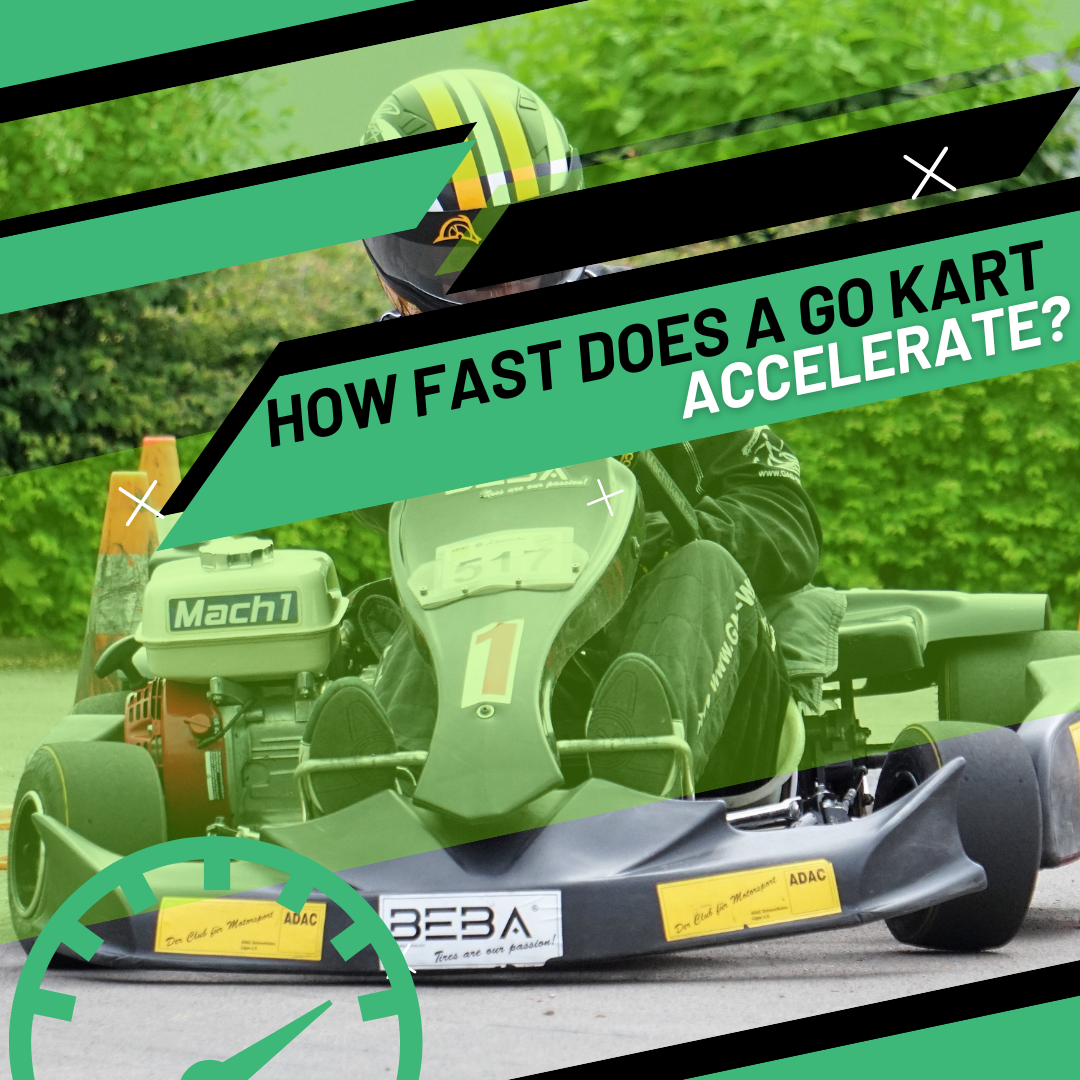
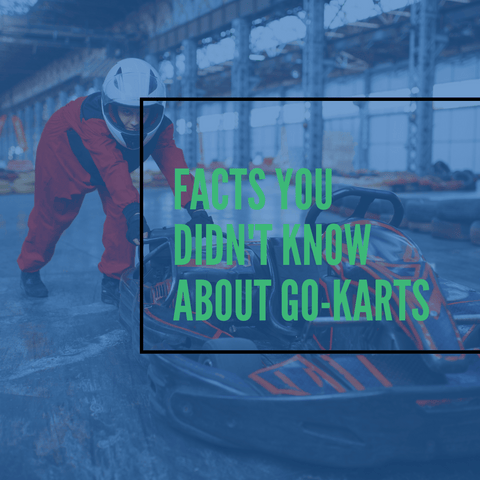
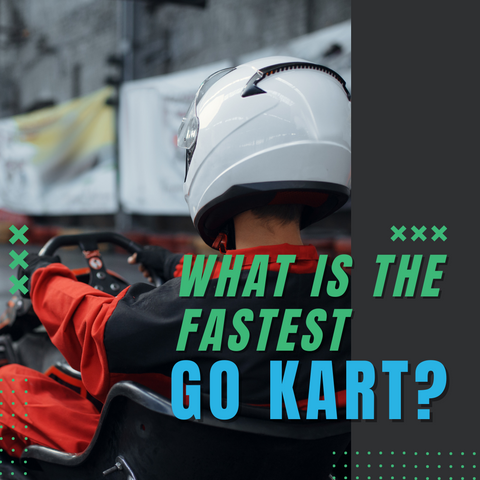
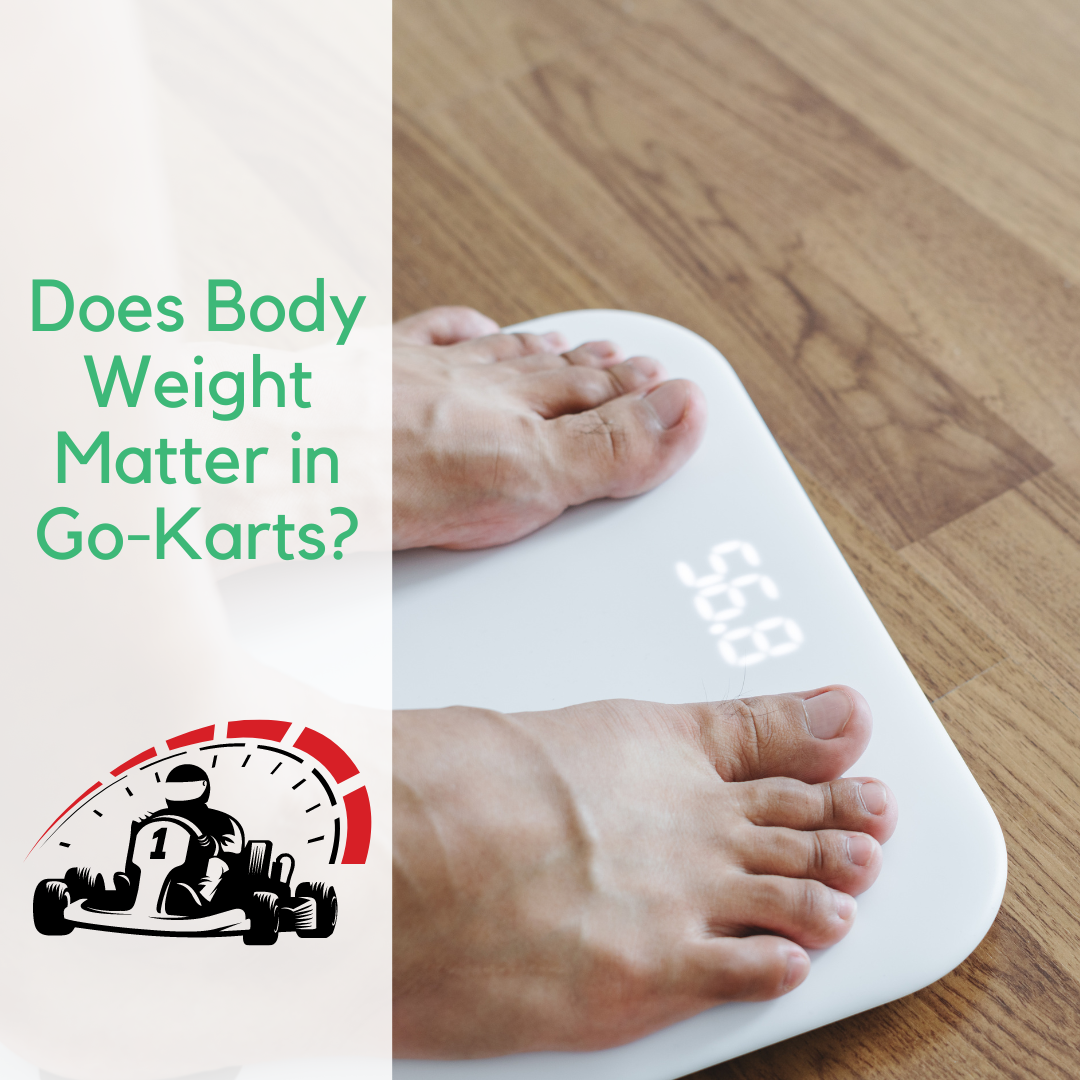

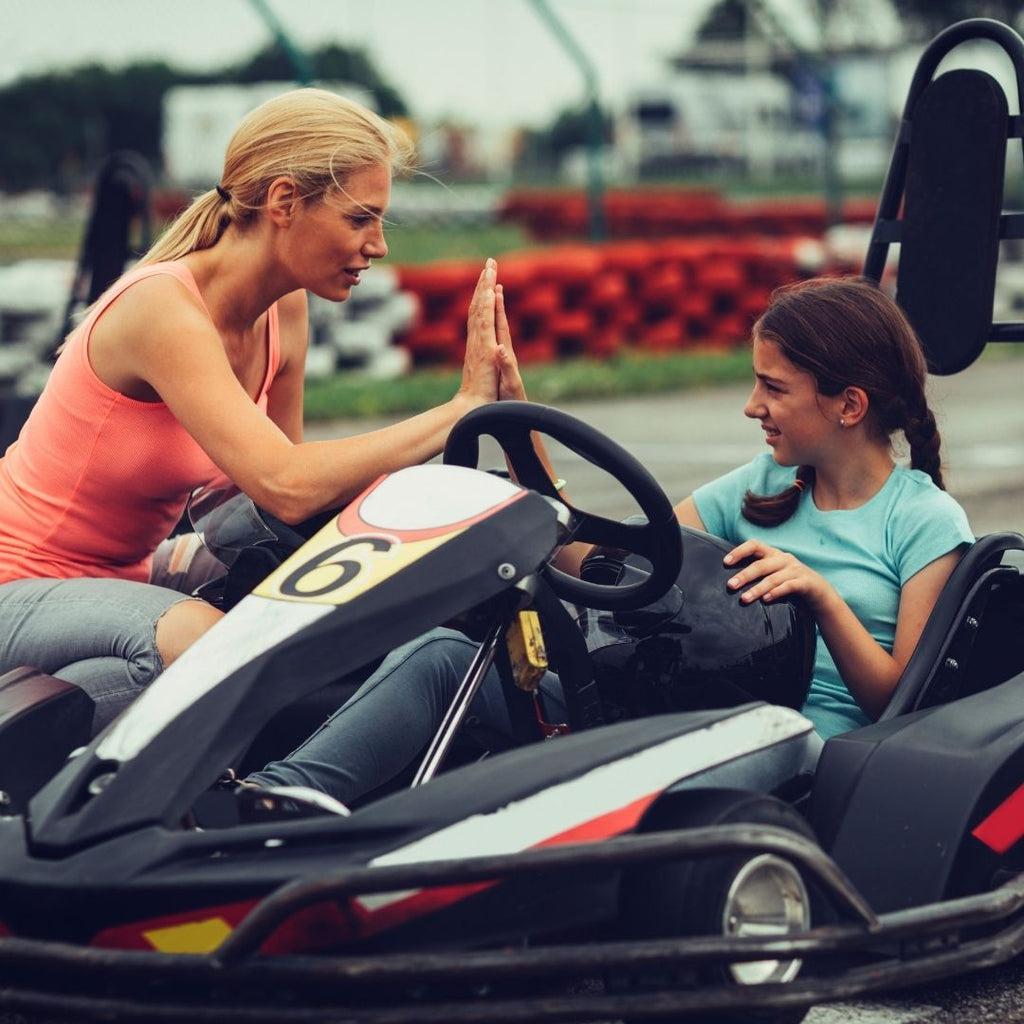
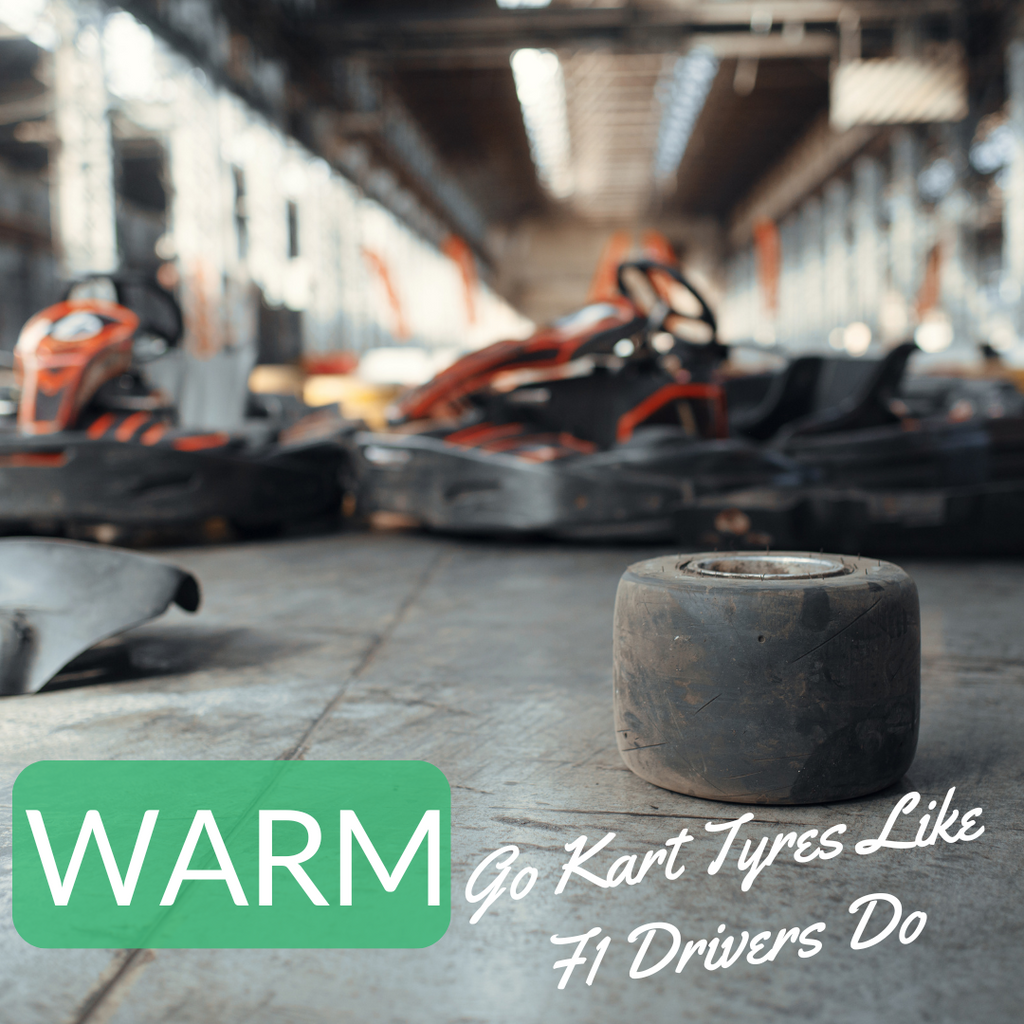



Share:
What is the Fastest Go Kart in the World? (Updated 2025)
Go Kart Braking: How To Drive Faster (+ Trail Braking)